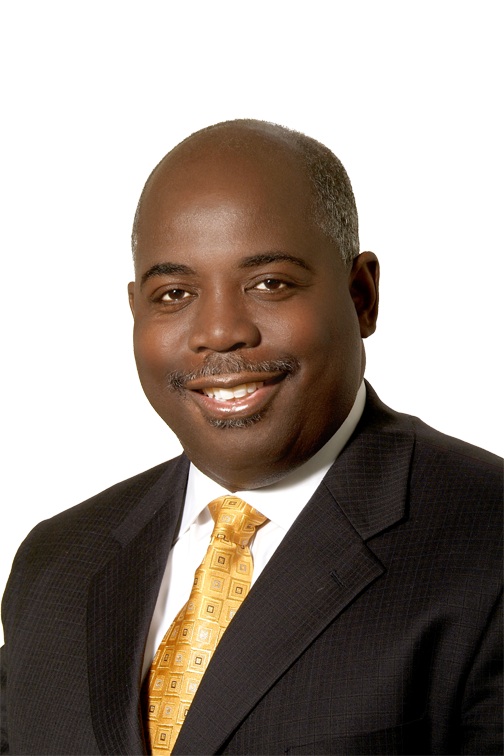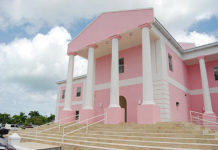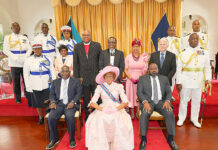
COMMUNICATION BY
HON. PHILIP BRAVE DAVIS, MP
DEPUTY PRIME MINISTER AND
MINISTER OF WORKS AND URBAN DEVELOPMENT – ON
“THE NEW PROVIDENCE INFRASTRUCTURE IMPROVEMENT PROJECT (NPIIP)” AND “THE AIRPORT GATEWAY PROJECT”
9th October 2013
Mr. Speaker:
Almost five years ago, on 5th January 2009, the Bahamian taxpayer saw the beginning of physical work related to the investment of some $278,220,000 in the construction and reconstruction of roadways in New Providence.
These two projects included:
• In the New Providence urban roadways, 15.7 miles of both single and dual carriageways and installation of water transmission mains and water distribution lines totalling some 63,000 feet or 12 miles; and,
• In the Airport roadway, some 6.2 miles of a four lane carriageway, nine roundabouts, relocation of utilities, a new high voltage overhead line and a new 24inch water main along with landscaping and ‘public art’.
I have attempted, during the past year, on a few occasions, to update the Honourable House on matters relating to both projects as well as to related public works projects.
Many of us have expressed concern, during this five year period of construction, about the planning, or lack thereof, which went into the projects. Many have been concerned with the New Providence Infrastructure Improvement Project of, sometimes seemingly casual, disregard for the convenience of road users; with the design; and, certainly, the initial associated costs; the delays leading to completion; and, distressingly, the tremendous cost overruns.
At each step of the way there have been questions and, particularly in the case of the NPIIP, the Government, before May 2012, seemed either unable or unwilling to share information with the public. When I assumed responsibility for the projects as Minister of Works and Urban Development in May 2012, I made it a point to regularly acquaint this Honourable House and the wider Bahamian community with concerns and potential solutions.
Mr. Speaker:
To suggest that we are happy with all matters related to the New Providence Infrastructure Improvement Project, would be to mislead the Bahamian People. I do not intend to be a party to such an effort.
We were faced, on assuming office, with a costly project mostly finished and our ability to impact the realities of cost, design and construction on this project would only have led to even more delay and cost. We took a decision to bring it to the happiest and earliest conclusion possible.
On 1 February 2013, all corridors of the NPIIP were ‘taken over’ by the Government. This means that, at that date, the Government assumed control and management of the roadways and related matters from the contractor. We then entered into a one year process of careful supervision of the work by the government’s consulting engineers and the Ministry’s engineering staff to confirm that the contracted quality was in place. That year comes to an end in four months at 31 January 2014. We continue to monitor the works and to arrange any necessary repair.
Mr. Speaker:
The Airport Gateway Project represents another side of the coin. The project was budgeted for $71,600,000; the expenditure to date has been $69,450,000 which leaves $2,150,000 remaining in the budget.
Construction started in May 2011 with a scheduled completion of August 2013. It is now substantially complete with no further delay anticipated except for unforeseen circumstances such as adverse weather conditions which occurrence would not be strange, particularly since we are still in the hurricane season. Our engineers describe the work as 99% complete. Some landscaping and other minor works remain to be completed.
Bahamian subcontractors on this project included Knowles Construction, Apex, D&T Landscaping and Triple W. The Employer’s (or, the Government’s) Representative is formed by a group of Bahamian Engineering Consultants. The contract closeout process has begun and a ‘handover’ of facilities is underway.
Mr. Speaker:
Least I seem to be speaking out of two sides of my mouth, there are certainly concerns which are related to the Airport Gateway Project but I wanted to assure the public that, in this case, it appears that the project went as planned and within the cost projected. There are those, not without some justification, who would complain about the overall layout and the $11,500,000 cost per mile.
But, the work was carried out as designed and with an acceptable minimal level of inconvenience to road users during the construction phase.
There are folks who question why no plan was included to make use of the southern shore of Lake Cunningham for pedestrian and cycle pathways. They believe that this could have been accomplished by placing the underground utilities where the north side of the roadway is now and designing a narrow median way between the traffic lanes, at least in this section if not all along the entire way to the airport.
We are now looking at what might be done along the lakeshore but any improvement project will incur additional expense.
Again, to have attempted to make changes, when we took responsibility in May 2012, would have represented irresponsibility on our part costing far more that we considered acceptable and, so we did not seek to delay the project.
Mr. Speaker:
The New Providence Infrastructure Improvement Project has cost $198.6million when one takes out the component costs related to the development of the Big Pond area; institutional strengthening within the Ministry of Works and the Department of Public Works; and, a comprehensive review of the Road Traffic Act which, together, accounts for another $7million for a total of $205.6million.
This represents a cost per mile of some $12,600,000. This work involved the rebuilding of two lane roadways and the building of four lane roadways to replace two lane roads in some areas as well as twelve miles of water lines but no major electrical work and relatively basic landscaping. Of course, they were working in heavily populated areas which presented considerable logistical difficulties which the Airport project did not have to deal with.
So to compare the two projects would have to include a considerable amount of intricate calculations to determine if comparable value for money was received. The Ministry will, of course, complete this assessment so as to assure the public as to how their tax dollars would have been spent, whether efficiently or no.
The Ministry of Works and Urban Development has design standards for different roadways and these minimum standards are what is used to determine the validity of contract bids.
Mr. Speaker:
The Airport Gateway Project was a straightforward decision to borrow the necessary money and the subsequent award of a contract for a complete “design and construction of a dual carriageway from Windsor Field to Bethel Avenue along the John F. Kennedy Route”.
The NPIIP, by comparison, was a great deal more complicated process. Monies had been borrowed from the Inter-American Development Bank (IDB) which included $46.2million supplemented by a counterpart Government cash funding of $19.8million for a total of $66million for New Providence roadwork.
Another IDB loan of $100million was executed in June 2008. The project, with a contract between the government and Jose Cartellone Construcciones Civilise (JCCC), as I mentioned before, started in January 2009 with a total budgeted allocation of $129million or $8.2million per mile, already considered expensive by many.
A further loan of $65million was approved by the IDB during the second half of 2012 in order to provide for a $77million shortfall, to include the government providing a cash injection of $12million representing a 15% proportional contribution by the Government. This brought the package of money for this project to $206million.
Mr. Speaker:
I have included a large quantity of numbers and related considerations in this communication as I believe that the Bahamian People are entitled to know how their money is being spent and how similar matters might be considered by them for comparison as we make decisions on their behalf. It is, after all, the people’s money which we decide to spend with every decision we make.
Thank you for your kind attention.




![A Con Artist [RACIST] wants Bahamians to fight progress – WELL, WHAT IS THIS?!](https://www.bahamaspress.com/wp-content/uploads/2025/07/Toby-Smith-218x150.jpg)


